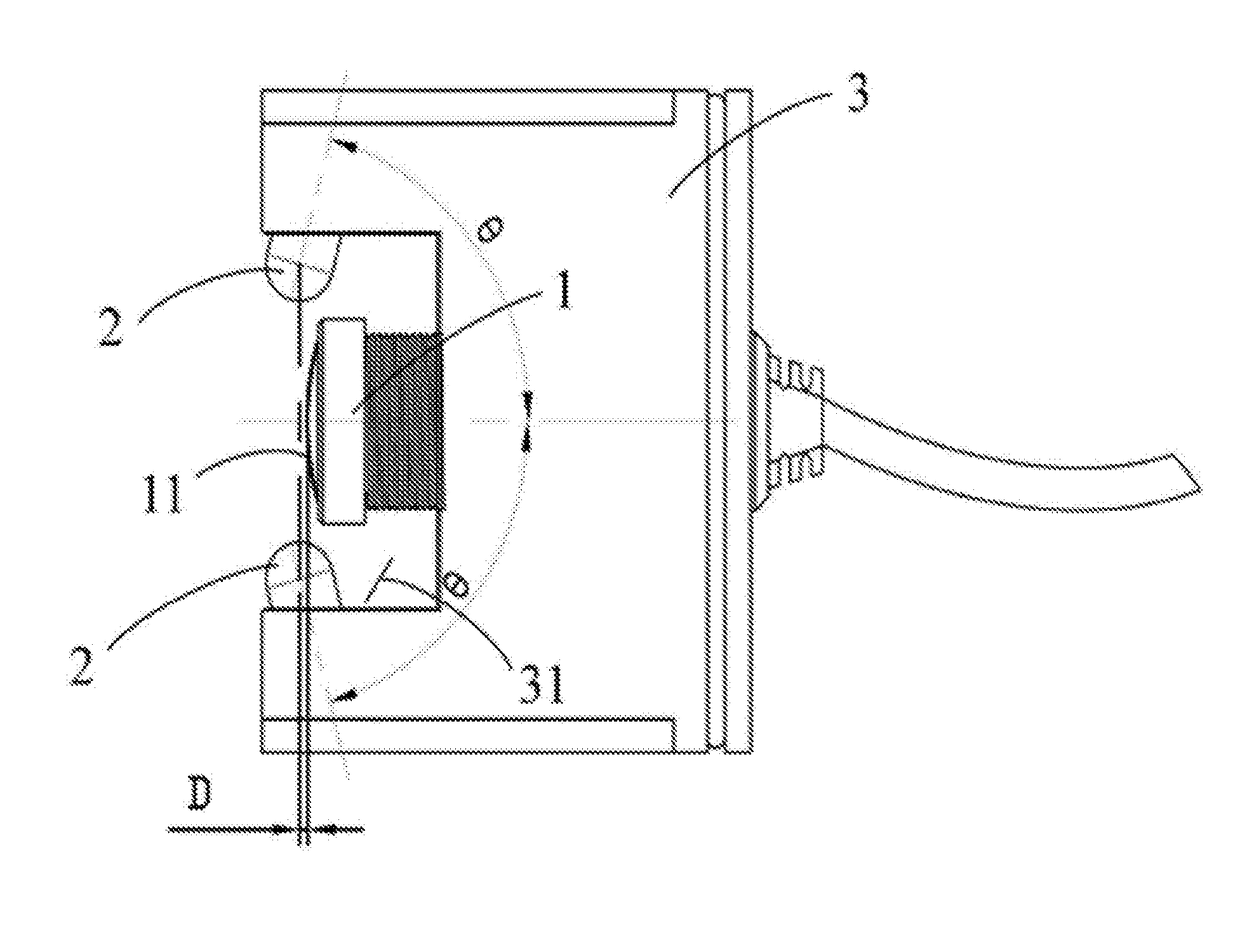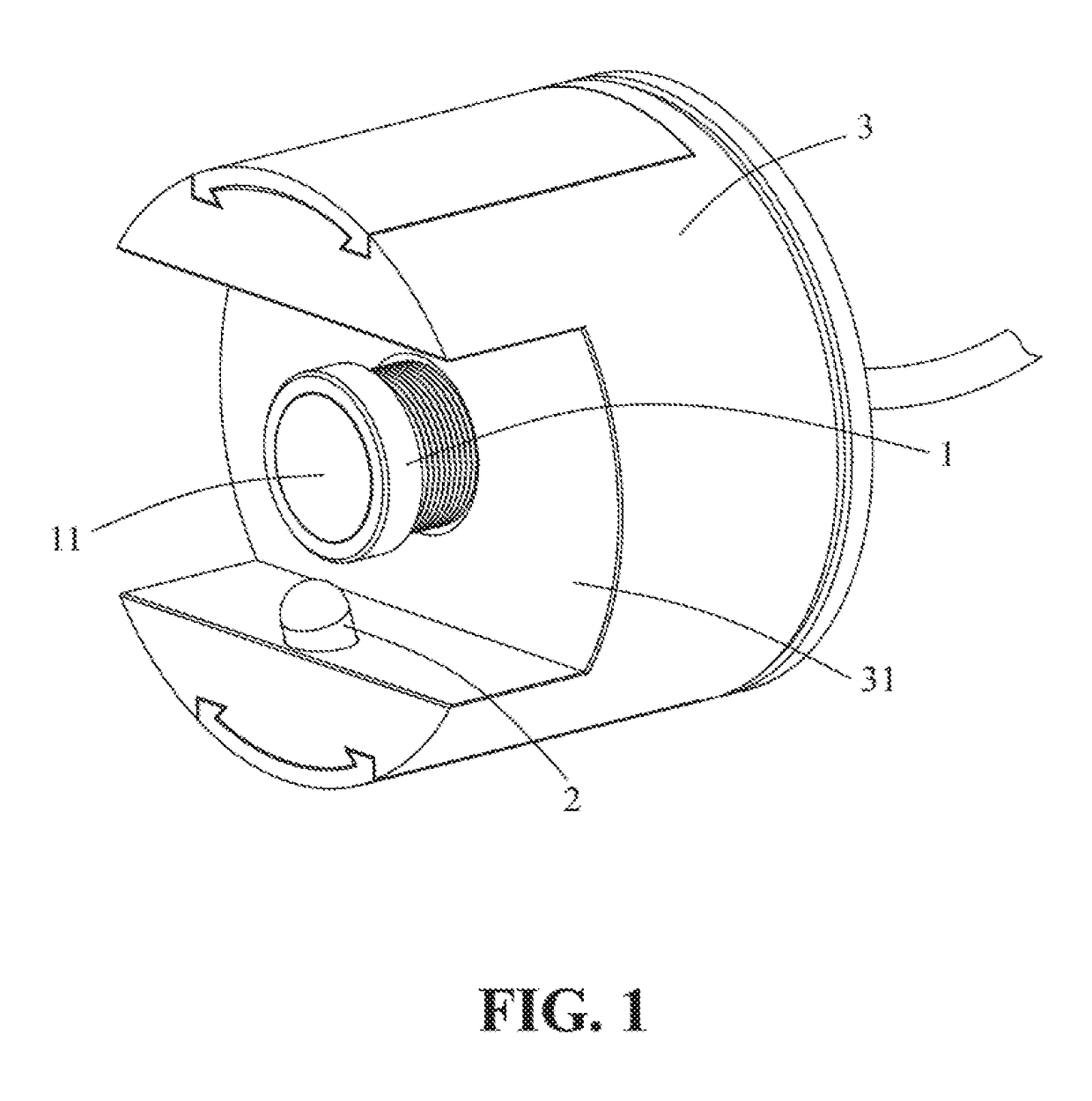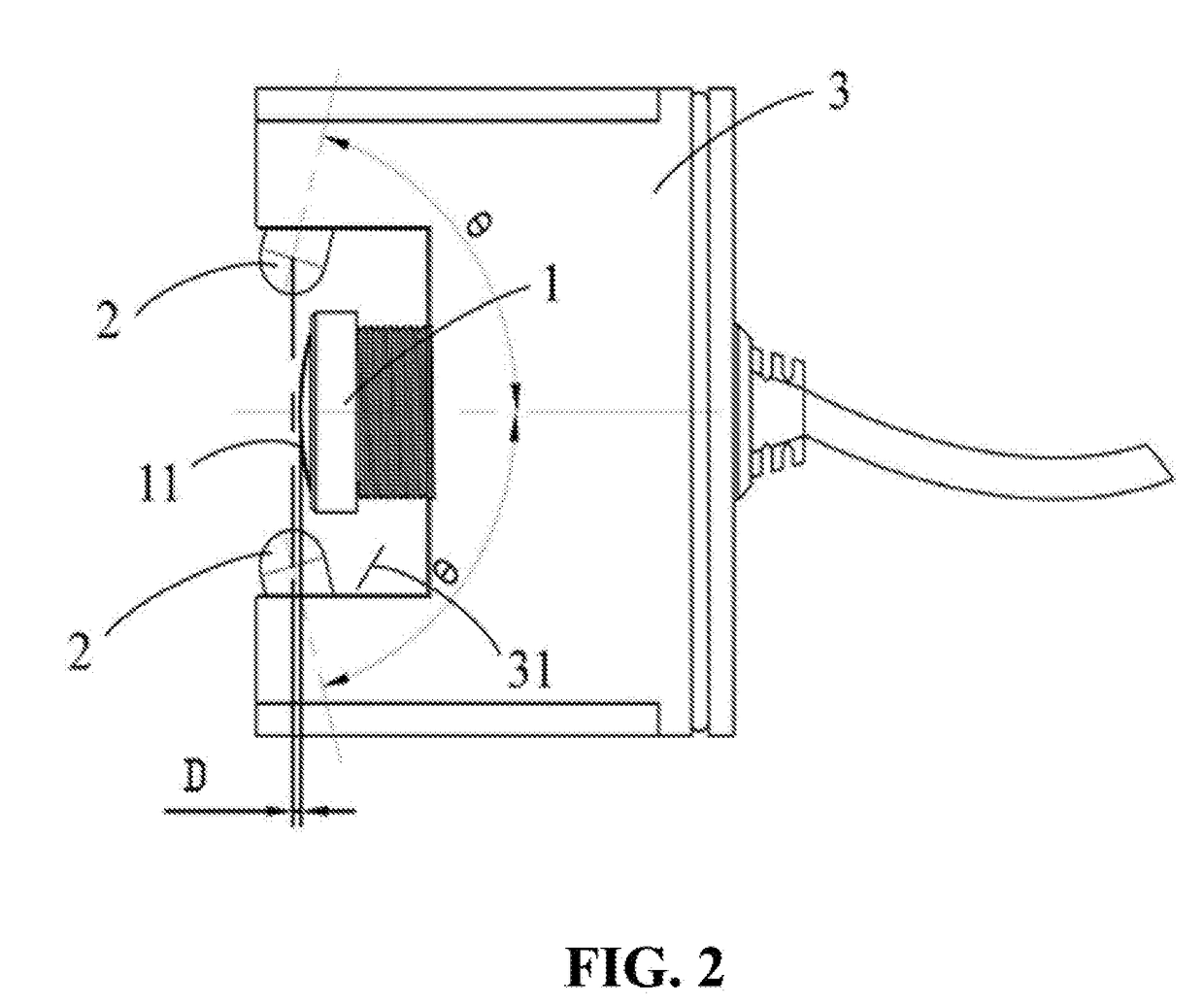Image capturing system
a technology of image capture and optical film, applied in the field of image capture system, can solve the problems the hydrophilicity of hydrophilic optical film is restricted, and the hydrophilicity of hydrophilic optical film is not effective, so as to prolong the effect of enhance the hydrophilicity and self-cleaning function of hydrophilic optical film
- Summary
- Abstract
- Description
- Claims
- Application Information
AI Technical Summary
Benefits of technology
Problems solved by technology
Method used
Image
Examples
Embodiment Construction
[0023]The accompanying drawings are included to provide a further understanding of the invention, and are incorporated in and constitute a part of this specification. The drawings illustrate embodiments of the invention and, together with the description, serve to explain the principles of the invention.
[0024]First of all, a basic concept of a hydrophilic optical film is presented. The hydrophilic optical film is fabricated from photocatalyzer, like TiO2 (titanium nitride) and SiO2 (silicon dioxide), which is one type of semiconductor materials, in order to achieve the super hydrophilicity effect. The photocatalyzer is one kind of catalyst, when sun light or ultraviolet light beams are radiated, the electrons on the external surface of the catalyst are irritated, generating sufficient power to separate in form of electron drift, causing positively charged holes flow, which action permits separation of hydroxides from water molecule bound and thus forming relatively active hydroxy ra...
PUM
 Login to View More
Login to View More Abstract
Description
Claims
Application Information
 Login to View More
Login to View More - R&D
- Intellectual Property
- Life Sciences
- Materials
- Tech Scout
- Unparalleled Data Quality
- Higher Quality Content
- 60% Fewer Hallucinations
Browse by: Latest US Patents, China's latest patents, Technical Efficacy Thesaurus, Application Domain, Technology Topic, Popular Technical Reports.
© 2025 PatSnap. All rights reserved.Legal|Privacy policy|Modern Slavery Act Transparency Statement|Sitemap|About US| Contact US: help@patsnap.com



